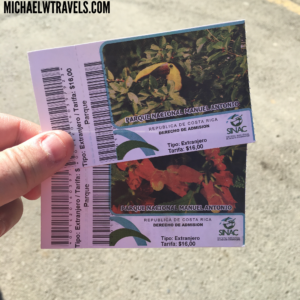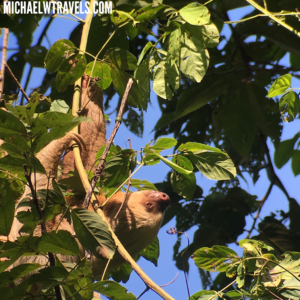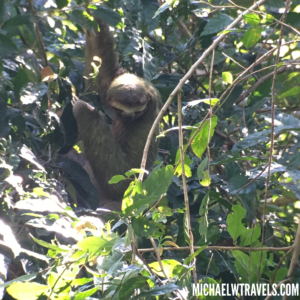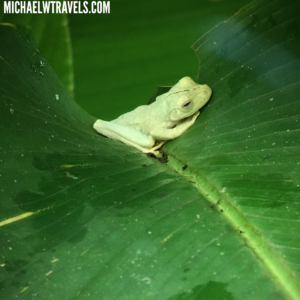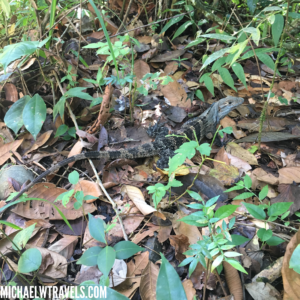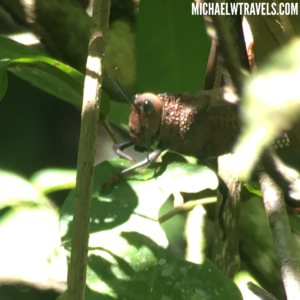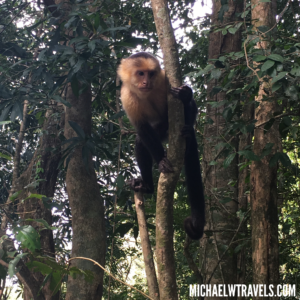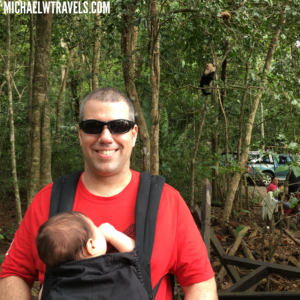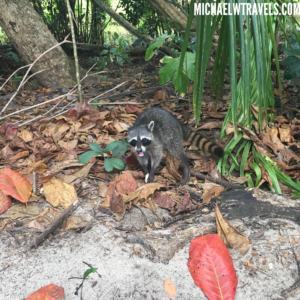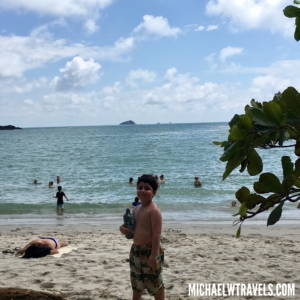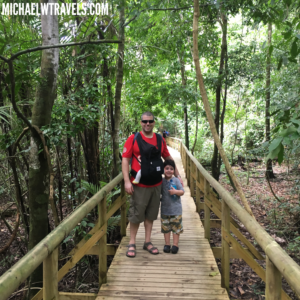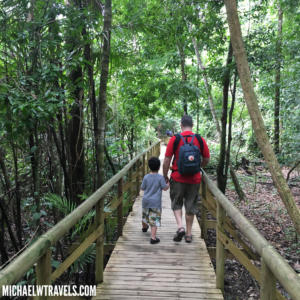During our visit to Costa Rica, Kim and I had a huge decision to make.
Since we had a limited amount of time in the country, we agreed it would be best to base ourselves in one area during our visit. We’d also spend a day seeing the capital, San Jose.
We narrowed our choices down to two options- Manuel Antonio National Park or Arenal Volcano. Both areas had their benefits but in the end we made a great decision.
Manuel Antonio National Park won out due to a higher abundance of wildlife while still having potential for us to see waterfalls and other awesome natural features.
Manuel Antonio is one of Costa Rica’s smallest but busiest national parks. They also cap how many people may enter each day. To make it more of a pain, once the park meets a certain quota, the gate closes, reopening every half hour or hour (I forget), allowing in an additional 50 people.
The park is closed on Mondays which ended up not really hurting us since Monday was our travel day, making the drive there from San Jose. (Along the way we made a stop at the Costa Rica Crocodile Bridge.)
Kim and I had a plans to make it to Manuel Antonio NP early so we’d be assured of entry. We actually did pretty well but with an almost 5 year old and an almost 4 month old along for the fun, we still arrived a bit later than we had planned. (From what I recall, we were parking around 8:45 AM.)
When we approached the ticket booth, the line wasn’t so long. However, past the ticket booth was another massive line to wait on since the park was already at capacity! I had read that hiring a guide was a good idea to spot wildlife that most would most likely walk past. This became a great way to also cut ahead to almost the front of the line. (The small group tours cost $20 per person, kids are free.)
While Kim and I typically like to explore parks and sites on our own, joining the guide was a great decision. It allowed us to see an abundance of wildlife, thanks in part to the powerful telescope he shared with the group.
Here are some photos of the animals of Manuel Antonio National Park.
Before we got much past the entry gate, our guide pointed out a bat hanging under some massive leaves. (I have some photos but they were a bit too blurry to bother posting.)
Sloths:
The animal highest on my list to see in the wild is the sloth. Within minutes, we spotted our first one high up in the trees. Without the telescope, I could make out the sloth’s shape and fur but I couldn’t see her anywhere as good as this.
We ended up seeing quite a few sloths during our visit. I’m pretty sure that all were the three-toed variety.
Further along in the park we got really lucky. We spotted a sloth just above eye level making it’s way down a tree. This was the best view I had of a sloth during the visit. Lots of people were crowded around watching from the road we were on as well as through the woods, on wooden path.
Frogs:
We didn’t see many frogs and I was OK with that but I was amazed by this little white one. I don’t recall what kind of frog this is but when you look at it in person, it appears to be white. Upon further inspection in photos, it took on a greenish color. I assume the frog is translucent, taking in the color of the leaf it sat on.
Iguanas:
We saw a bunch of lizards during our visit. One which I didn’t include was really tiny and almost camouflaged with the leaf it sat on.
I’m pretty sure that the lizard above is an iguana and the one below is an iguana that Kim spotted hanging out in a tree while Lucas was playing on the beach. (Manuel Antonio has a few beaches which are also popular with locals.)
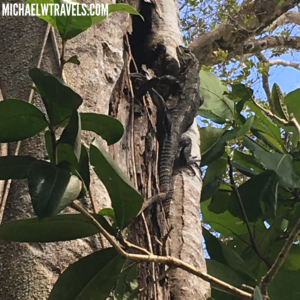
Critters:
We saw lots of different bugs. No, I’m not really a fan of insects but I loved this little red grasshopper. He was pretty much impossible to see without using the telescope.
We also saw a really interesting spider in the center of a huge web. Sadly, it did not photograph well.
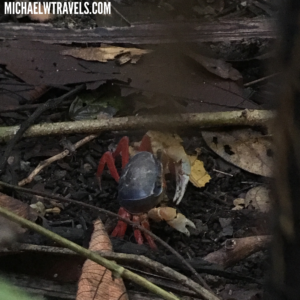 In a bunch of other areas we saw land crabs with bright red/ orange legs.
In a bunch of other areas we saw land crabs with bright red/ orange legs.
White- Faced Monkeys:
We saw lots of white-faced monkeys in the paths near the beach. They put on quite a show. Play-fighting, jumping through the trees, running around and even stealing some visitor’s food and drinks!
Other pests:
I saw the biggest coatimundi (raccoon family) that I’ve ever laid eyes on running around, trying to steal people’s food. People threw sand to chase it off. I tried to follow to get a photo but all I could get was his backside!
The raccoons in the park do not give up! We watched them sneak up behind people’s chairs on the beach to get into their bags. Others climbed up on the picnic tables. If you let your guard down, a raccoon will get into your bags by the beach and picnic table area.
I found it interesting how the raccoons in the park were not overly afraid of people. I guess when the animal knows food is close, good luck getting rid of them.
Besides excellent wildlife spotting, Lucas loved playing on the beach. Manuel Antonio isn’t just about the animals and hiking!
After a tiring day in the humid park, we were all hungry. We took a path back towards the entrance called the Sloth Trail where we noticed tons of crabs below. And yes, we even came across another sloth high up in the trees. All we could really make our was a greyish chunk of fur but it still was another sighting!
Over Manuel Antonio National Park had something for everyone. Easy/ moderate hiking, an abundance of wildlife, beaches and more.
The park definitely lived up to our expectations.
Have you visited Costa Rica? If so, what parts did you check out?
Related Posts:
